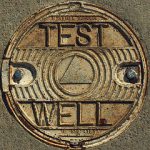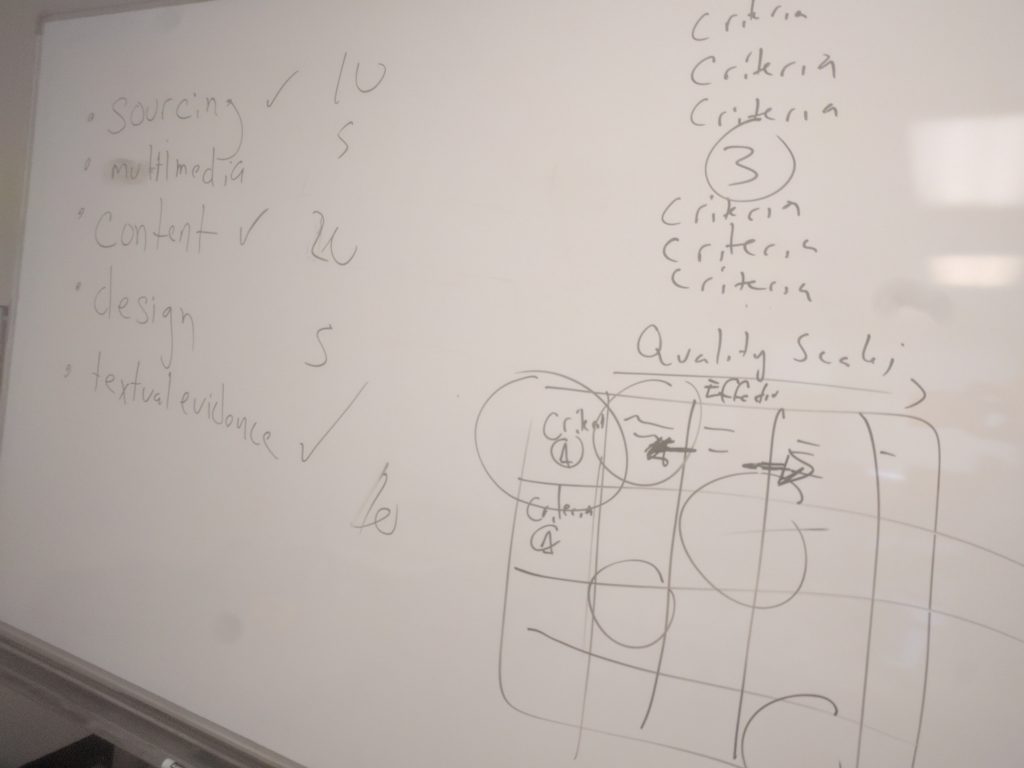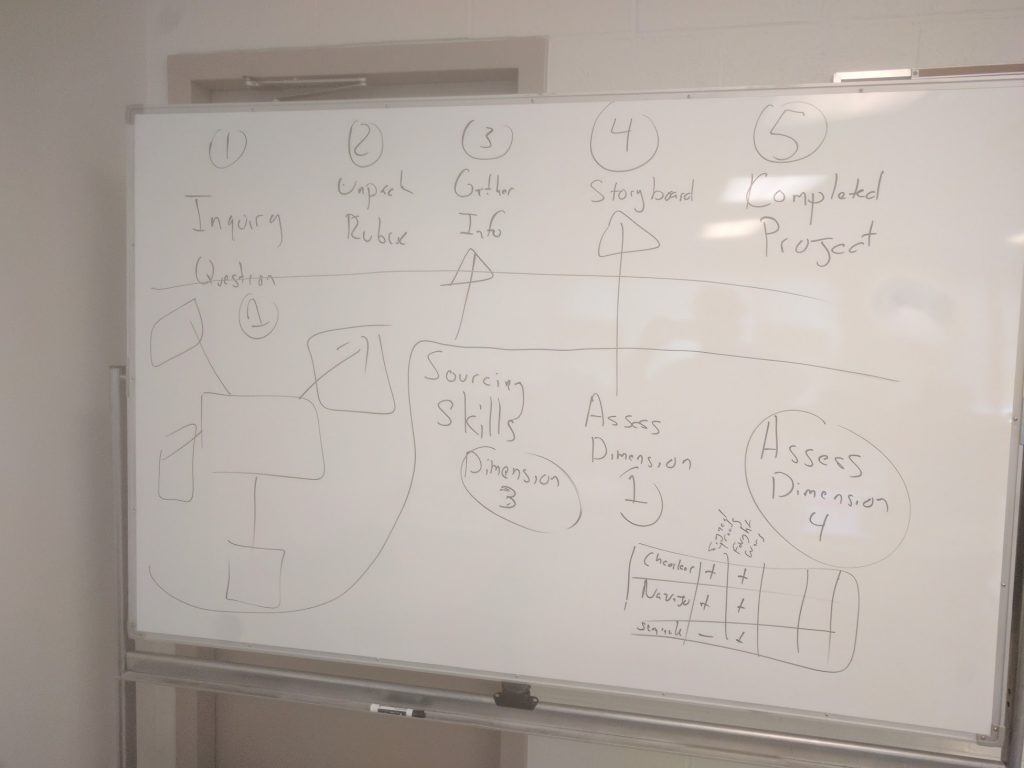The same state projects I made thirty years ago now get projected on slides with too many bullet points and dizzying animations. We as educators are not beginning with the fundamental question, “How does this technology enhance or inhibit my pedagogical goal?”
You can quote Cuban all you want. Looking at studies that show technologies inefficacy of teaching matter little to me. We use the web to read, write, and participate. So instead of comparing conditions where students use or do not use edtech I care more about preparing students for an economy driven by ideas and knowledge.
Our definition of literacy has shifted. Yet at the same time we must make sure we use to technology for new learning and not to showcase what was learned. This is my greatest take away from out work with the Connecticut Social Studies Frameworks.
Inquiry isn’t a lesson. It is the point.

Inquiry as the Assessment
At the GIS Institute we spent day three focusing on our assessment strategies. We began with a quick overview of rubrics. My main focus was on improving learning through assessment while simplifying the process for teachers.
We began with a review of rubrics and discussed the difference between scales and criterion. We discussed the pros and cons of criterion versus holistic rubrics. We also discussed how you identify key levers in standards and how to differentiate using standards a grade band up and below.

We can’t be prisoners to our own rubrics. We spent some time discussing how all assessments have bias and why not simply embrace our subjectivity rather than striving for false objectivity. Especially in terms of personalizing our assessment. You can have the same tool for every student but that doesn’t mean you have to use it the same way for everyone.
Think about it. When we brainstormed our list of criterion for Story Map assessment we came up with five: sourcing, multimedia, content, design, and textual evidence. If we used a criterion based rubric and had four level of scales students have to navigate 20 different boxes. That’s hard for an adult let alone a nine year old.
Why not use your rubric throughout a project rather than at the end? As students work identify their targeted areas of growth and focus your feedback and instruction on that criteria.
We also discussed how, depending on your goals and values, you can also weight criterion differently. Many history teachers in the room wanted to value content knowledge more while language arts and technology teachers wanted to weight the design choices to a higher degree. That is fine.
Cater your inquiry assessments to the people and the products.
Inquiry Arc and Scaffolding Assessments
We also discussed strategies of using our assessments not just as a measurement tool as a learning device that provides students with scaffolds throughout the project.
We spent a good part of our discussion of assessment on the dimensions of inquiry. The Connecticut Framework draws on the College, Career, and Civic Life (C3) Framework which includes four dimensions of inquiry:
- Dimension 1: Developing questions and planning inquiry
- Dimension 2: Applying disciplinary concepts and tools (this is where “content” is absolutely critical)
- Dimension 3: Evaluating sources and using evidence
- Dimension 4: Communicating conclusions and taking informed action
This inquiry Arc must be present throughout the process. So must your assessment. This does not mean you need to rubricize each step.

Yet you want repeated check ins across the arc. This not only provides students with supports to stay on track, but they get to revise their work using peer and teacher feedback. You also build in the concepts and tools of your discipline into the arc.
We discussed how a mind map provides insight into dimension 1 of the arc while providing you with evidence of how well students can differentiate between their compelling and supporting questions and knowing when they have asked and answered the right questions.
Next we discussed the role of mentor texts and unpacking the rubrics with our students. We wanted to take them to a place where they understood the, “I can’s” while looking at examples of people who “tried” and “did.” Looking at the feedback students write to mentor texts provides valuable data into students applying disciplinary concepts and tools.
We then discussed the importance of modeling and teaching multiple source reading and analysis. We discussed how you can match the right graphic organizer to a specific text structure. For example a Vee diagram makes a great tool for argumentative writing. We also described how different note taking strategies fit different texts and tasks.Students need the most scaffolding and instruction during this dimension. We concluded our assessment must reflect this fact.
Next we stressed the importance of story boarding (pre writing) our Story Maps before students begin their project. Now that they have all of their claims stated and evidence collected they can begin to tell their story. I am a huge proponent of beginning with paper prototypes. Not only do you remove the complexity of web tools but you get a record of student progress that is quite predictive of final perfomance.
Finally when assessing the finished product we reminded each other that our rubric gets used throughout the lesson. Not everyone needs to be measured on each criterion. Focus your feedback on areas where students need to grow.
Technology as Tool
Technologies are Disciplinary Literacies. We have focused on Story Maps because their creation traverses the inquiry arc. Yet we must make sure we do not slip into replacing the slide deck, which replaced the poster. The C3 frameworkd require us to rethink the time honored project.
We must also account for the shifting nature of how we read and write in the social studies classroom. Technology isn’t just our tool for collecting our data on how students grow. We must also encourage students to grow in their use of technology as a disciplinary tool.
Up next for us at the institute will be making GIS learning activities for teachers to complete with students. This will be a challenge. I am excited.
image credit: “testing” flickr photo by rjacklin1975 https://flickr.com/photos/rjacklin/436491997 shared under a Creative Commons (BY) license


One response on “Inquiry as the Assessment, Technology is the Tool”
Mentions